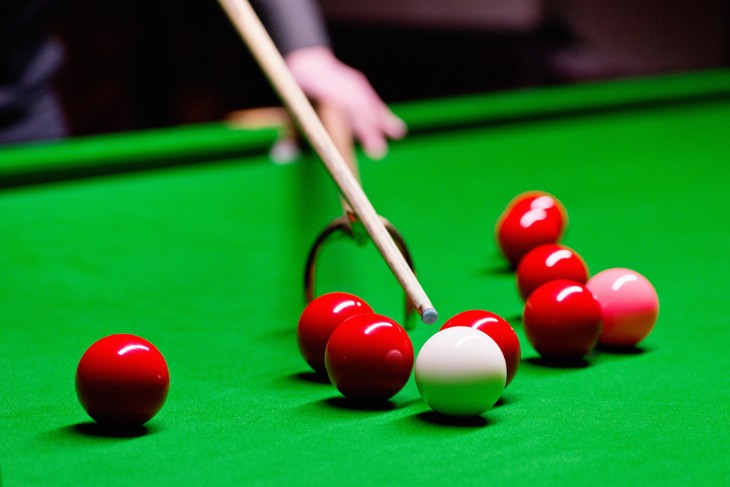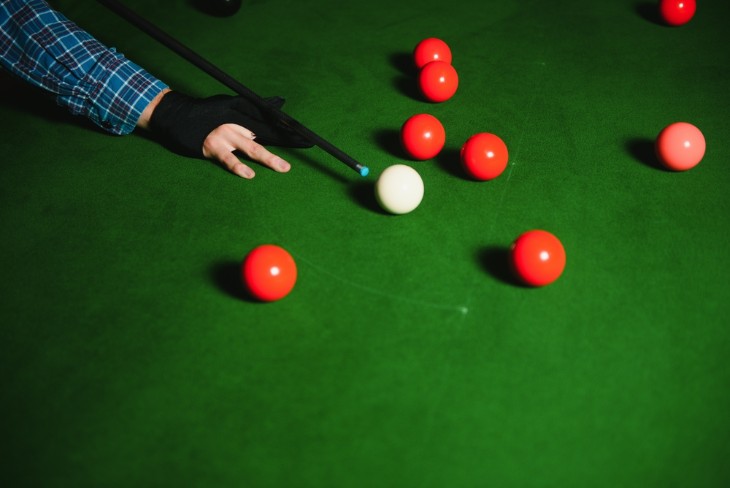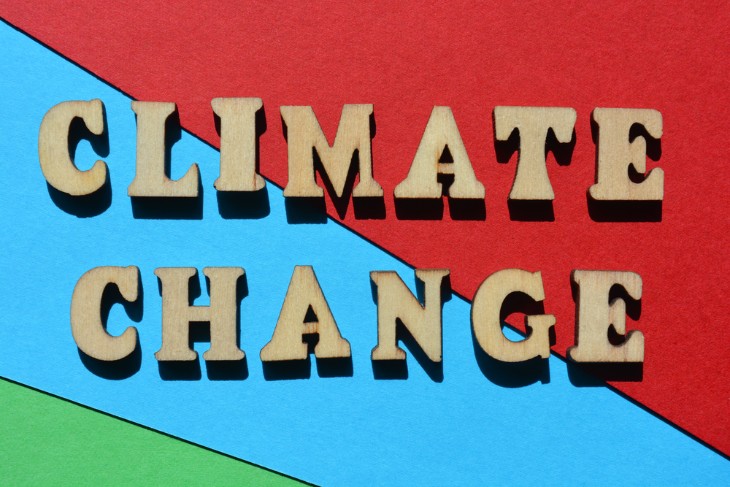This article explores how climate change is affecting indoor sports, with a particular focus on the subtle yet significant impacts on snooker. We will investigate the challenges that indoor sports facilities are encountering and highlight the urgent need for innovative solutions. These solutions are essential to preserve the essence and standard of indoor sports in an ever-changing environmental landscape.
Overview of Snooker
Snooker, a cue sport originating in the late 19th century, has evolved into a globally popular indoor game. Rooted in the traditional billiards family, snooker gained prominence in the early 20th century and has since captivated enthusiasts worldwide. The game involves precision, strategy, and skill, played on a rectangular table covered with a specialized green cloth and utilizing cue sticks to strike coloured balls into pockets.
Historical Evolution
The roots of snooker can be traced back to the British officers stationed in India who devised a variation of billiards. Initially known as "billiards for snookers," the game incorporated additional coloured balls, each with designated point values. Over time, this unique blend of strategy and precision garnered widespread attention, evolving into the sport recognized today.
Importance of Controlled Indoor Environments
Indoor sports like snooker heavily rely on controlled environmental conditions for optimal gameplay. The playing surface, primarily the snooker table, demands specific humidity, temperature, and lighting levels for consistency and fairness. The felt or baize covering the table is sensitive to changes in these conditions, affecting ball roll and cue ball control.
Moreover, players' performances are intricately tied to the atmosphere within the playing venue. Any deviation from the ideal conditions can influence player focus, cue response, and ultimately impact the game's outcome. Thus, the stability of the indoor environment becomes paramount for maintaining the integrity and precision required in snooker.
Snooker's evolution and its dependence on controlled indoor environments make it particularly vulnerable to the impacts of climate change. The game's meticulous nature and the delicacy of its playing surface underscore the necessity of stable and consistent conditions, making it imperative to understand how climate change may disrupt these prerequisites.
Climate Change's Impact on Indoor Environments
Climate change, characterized by shifts in global weather patterns and increased frequency of extreme events, poses significant challenges for indoor environments, including sports facilities like those hosting snooker tournaments. These indoor spaces, often assumed to be insulated from external climatic variations, are susceptible to indirect effects stemming from changes in the outdoor environment.
Temperature Fluctuations and HVAC Systems
One of the primary challenges arising from climate change is the alteration in temperature patterns. Despite being indoor spaces, sports facilities rely on Heating, Ventilation, and Air Conditioning (HVAC) systems to maintain consistent and comfortable temperatures. However, extreme outdoor temperatures can strain these systems, leading to fluctuations within the indoor environment. Sudden heat waves or cold snaps may overburden HVAC systems, resulting in inadequate temperature control, thereby affecting the playing conditions for indoor sports like snooker.
Impact on Humidity Levels
Climate change also disrupts humidity levels, impacting the stability of indoor environments. Snooker, in particular, demands a specific humidity range to ensure the integrity of the table surface. Excessive moisture or dryness can warp the cloth covering the snooker table, altering its playing characteristics. Furthermore, fluctuations in humidity can affect cue stick grip and player comfort, influencing performance and gameplay quality.
Structural Integrity and Climate-Induced Risks
Extreme weather events associated with climate change, such as storms, floods, or intense rainfall, pose risks to the structural integrity of indoor sports facilities. Floods or leaks resulting from heavy rainfall can damage infrastructure, including the snooker tables and playing surfaces. Moreover, increased frequency or intensity of storms may necessitate enhanced building resilience measures to ensure the safety and durability of indoor sports venues.
The indirect impacts of climate change on indoor environments, while not immediately apparent, pose significant challenges to maintaining the stable and controlled conditions necessary for sports like snooker. Understanding and addressing these impacts become imperative for ensuring the sustainability and continuity of indoor sports in the face of changing climatic conditions.

Challenges Faced by Indoor Sports Facilities
Indoor sports facilities, while seemingly sheltered from external environmental factors, encounter numerous challenges exacerbated by climate change, affecting their functionality and the sports played within them.
Maintaining Stable Conditions
One of the primary challenges revolves around sustaining stable environmental conditions within indoor sports facilities. Maintaining consistent temperature, humidity, and lighting levels crucial for sports like snooker becomes increasingly difficult due to external climatic variations. Fluctuating outdoor temperatures and humidity levels put pressure on HVAC systems and environmental control mechanisms, making it challenging to uphold the precise conditions necessary for optimal gameplay.
Infrastructure Vulnerability
Indoor sports facilities face risks associated with structural vulnerability arising from extreme weather events intensified by climate change. Severe storms, floods, or extreme temperatures can compromise the integrity of the building, leading to damages that may directly impact the playing surfaces, seating areas, or other critical infrastructure. The need for resilient design and retrofitting measures becomes imperative to withstand climate-induced stresses and ensure the safety and functionality of these venues.
Operational and Financial Implications
Climate change-induced challenges pose operational and financial burdens on indoor sports facilities. Increased energy consumption due to the strain on HVAC systems for temperature regulation, repairs from weather-related damages, and the need for adaptations or upgrades to maintain stable conditions contribute to rising operational costs. These facilities may face budgetary constraints in addressing these challenges while continuing to provide quality playing conditions for sports enthusiasts.
Adaptation and Sustainability
Adapting indoor sports facilities to cope with climate change entails a shift towards sustainability measures. Incorporating eco-friendly technologies, implementing energy-efficient HVAC systems, and adopting sustainable building practices become crucial. Balancing the need for environmental stewardship with the requirements of maintaining ideal playing conditions poses a complex challenge, necessitating innovative and cost-effective solutions.
Accessibility and Equity
Climate change impacts on indoor sports facilities can exacerbate issues of accessibility and equity. Vulnerable communities may face disproportionate challenges in accessing well-maintained facilities due to financial constraints or lack of resources to adapt to climate-induced changes. Ensuring equitable access to quality indoor sports facilities becomes essential for promoting inclusivity and facilitating sports participation across diverse socio-economic groups.
Navigating these multifaceted challenges is crucial for indoor sports facilities to adapt, remain sustainable, and continue providing conducive environments for various sports, including snooker, amidst the changing climatic landscape. Addressing these challenges requires collaborative efforts, innovative solutions, and a commitment to creating resilient and inclusive sports environments.
Specific Impact on Snooker
Snooker, a game intricately reliant on precise conditions and fine-tuned playing surfaces, faces distinct challenges due to the impacts of climate change. The delicacy of the snooker table and the sensitivity of its components make it particularly susceptible to variations in environmental factors, significantly affecting gameplay and player performance.
Effects on Table Surface
Climate change-induced fluctuations in temperature and humidity levels directly impact the snooker table's playing surface. The specialized cloth covering, known as baize, is highly sensitive to changes in moisture and temperature. Increased humidity can cause the baize to expand or become damp, altering its smoothness and affecting ball roll and bounce consistency. Conversely, low humidity levels can lead to the baize drying out, causing it to shrink or become rough, further compromising the table's playability.
Cue Responsiveness and Player Performance
Snooker players rely on the precise handling of cues and the responsiveness of the table surface for accurate shots. Climate-induced variations in environmental conditions can affect cue stick grip due to changes in humidity. This can impact a player's ability to control the cue ball's movement, affecting shot accuracy and overall gameplay. Furthermore, fluctuations in temperature can affect the behaviour of the balls, making them more or less reactive to player cues, consequently influencing strategy and performance.
Venue Adaptations and Maintenance
To mitigate the impact of climate change on snooker gameplay, venues hosting snooker tournaments or competitions may need to implement adaptations or maintenance measures. These measures could include enhanced climate control systems, dehumidifiers, or improved insulation to maintain stable conditions within the playing area. Regular maintenance and monitoring of the snooker tables become crucial to ensure the baize remains in optimal condition for fair and consistent gameplay.
Player Adaptation and Strategy
Snooker players themselves may need to adapt their playing styles and strategies to accommodate variations in playing conditions caused by climate change. Adjusting cue grip or shot selection based on the prevailing environmental conditions within the venue becomes essential for maintaining a competitive edge. Players adept at understanding and adapting to varying table conditions may gain an advantage over those less adaptable to changing circumstances.
Understanding the specific impacts of climate change on snooker is crucial for both venue managers and players to devise strategies that preserve the integrity of the game. Balancing the need for controlled indoor conditions with adaptability to environmental changes is pivotal in ensuring fair and high-quality gameplay in snooker despite the challenges posed by climate variability.

Solutions and Mitigation Strategies
Addressing the challenges posed by climate change on indoor sports facilities, including those hosting snooker tournaments, requires a proactive approach encompassing technological advancements, innovative strategies, and sustainable practices aimed at maintaining optimal playing conditions while reducing environmental impact.
Advanced Climate Control Systems
Investing in state-of-the-art climate control systems tailored to the specific requirements of indoor sports venues is paramount. Upgraded Heating, Ventilation, and Air Conditioning (HVAC) systems equipped with precision controls for temperature and humidity regulation can ensure consistent and stable indoor environments necessary for snooker gameplay. Utilizing smart sensors and adaptive technologies can optimize energy use and enhance efficiency.
Eco-Friendly Venue Designs
Implementing eco-friendly building designs and construction materials can contribute to reducing the environmental footprint of indoor sports facilities. Incorporating sustainable practices such as utilizing renewable energy sources, installing energy-efficient lighting, and employing green building materials can aid in minimizing energy consumption and greenhouse gas emissions while maintaining comfortable playing conditions.
Adaptation Measures
Adapting venues to better withstand climate-related challenges involves retrofitting and modifications. This might include improving insulation, installing moisture barriers, or employing climate-specific adjustments such as dehumidification systems or humidity controllers to maintain the ideal playing conditions for snooker. Regular maintenance and monitoring of the playing surfaces become essential to ensure their longevity and optimal performance.
Research and Innovation
Encouraging research and innovation in materials science and sports venue technology is crucial. Developing more resilient and weather-resistant materials for snooker tables, such as advanced baize fabrics or moisture-resistant components, can help mitigate the impact of climate-induced changes on playing surfaces. Innovation in climate-adaptive technologies specifically tailored for indoor sports can significantly aid in maintaining stable conditions.
Education and Awareness
Raising awareness and educating stakeholders, including venue managers, players, and governing bodies, about the impacts of climate change on indoor sports facilities is vital. Promoting sustainable practices, efficient resource utilization, and the importance of climate-resilient infrastructure can foster a collective commitment towards mitigating climate risks and ensuring the long-term sustainability of indoor sports like snooker.
Adopting a multi-faceted approach that integrates technological innovations, sustainable practices, and proactive adaptation measures is crucial for mitigating the adverse effects of climate change on indoor sports facilities. Collaboration among stakeholders, continual research, and a commitment to environmentally conscious practices are key to safeguarding the future of indoor sports amidst a changing climate.
Future Considerations
Climate-Resilient Infrastructure
The future of indoor sports facilities hinges on the development and implementation of climate-resilient infrastructure. Emphasizing resilient design principles, such as building materials capable of withstanding extreme weather events and incorporating adaptive technologies, will be crucial. Investing in robust infrastructure ensures the longevity and functionality of venues hosting indoor sports like snooker in the face of changing climate patterns.
Technological Innovations
Continual advancements in technology play a pivotal role in mitigating climate change impacts on indoor sports. Research and development aimed at creating more durable and adaptable materials for snooker tables and innovative climate control systems tailored to specific venue requirements will be essential. Leveraging artificial intelligence and data analytics can optimize energy use and maintain ideal playing conditions while reducing environmental impact.
Sustainable Practices and Green Initiatives
A shift towards sustainable practices within indoor sports facilities is imperative. Implementing renewable energy sources, adopting energy-efficient technologies, and embracing eco-friendly building designs contribute to reducing carbon footprints. Incorporating green initiatives such as waste reduction, water conservation, and sustainable procurement practices fosters environmental stewardship while ensuring long-term viability.
Collaboration and Advocacy
Collaborative efforts among sports organizations, governing bodies, policymakers, and environmental advocates are instrumental in driving change. Advocating for policies that incentivize climate-resilient infrastructure, promoting sustainable practices, and raising awareness about the importance of climate action within the sports industry are crucial steps. Encouraging partnerships and alliances that prioritize sustainability can catalyze positive transformations.
Adaptation Strategies for Players and Management
As climate change continues to impact indoor sports, players and venue management must adapt. Players may need to develop adaptive strategies to cope with varying playing conditions, emphasizing flexibility and skill adjustments. Venue managers should proactively implement climate-responsive measures, regularly assess facility vulnerabilities, and invest in continuous improvements to ensure adaptability to evolving climate challenges.
Continued Research and Education
The future landscape of indoor sports in a changing climate necessitates ongoing research, education, and knowledge-sharing. Encouraging studies on the intersection of climate change and indoor sports, disseminating best practices, and providing resources for venue managers and players are essential. Promoting a culture of learning and innovation fosters resilience and sustainability within the indoor sports community.
Embracing these future considerations underscores the imperative of proactive measures, innovation, and collaborative action to safeguard indoor sports facilities and ensure the continued enjoyment and integrity of sports like snooker in an ever-evolving climate. Balancing the need for high-quality gameplay with environmental responsibility is key to a sustainable future for indoor sports amidst climate change.
Summary
Committing to sustainable practices and ongoing adaptability is key to preserving the longevity and appeal of indoor sports, ensuring they continue to be enjoyed and celebrated by future generations.
For more information:




.webp)


 (1).webp)




















